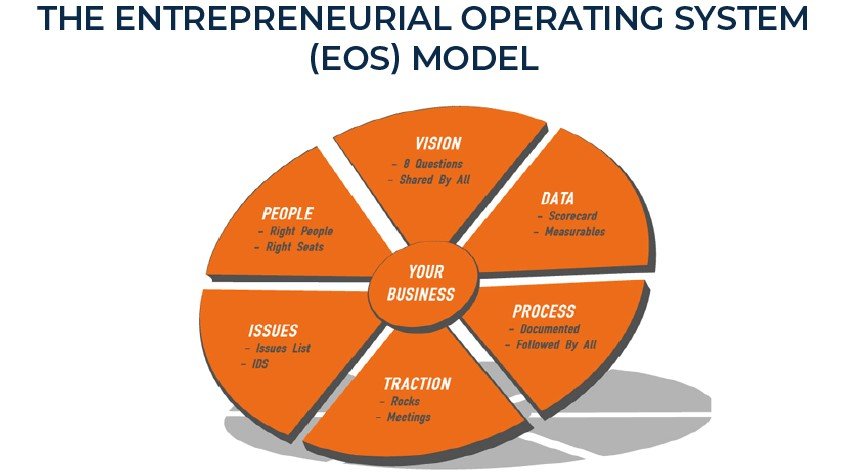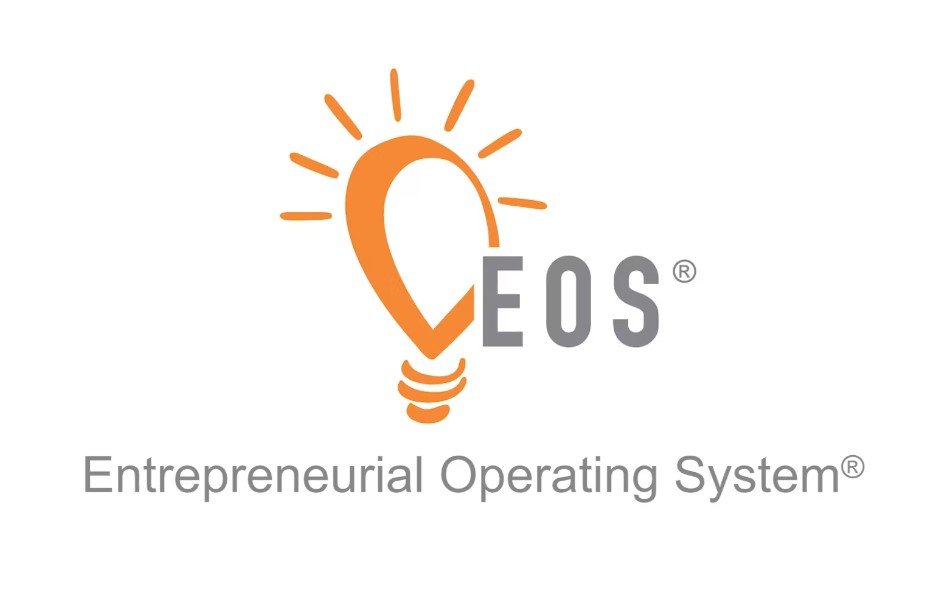Business leaders like you may be wondering – what exactly is the Entrepreneurial Operating System (EOS)? Developed by Gino Wickman, EOS is a comprehensive system that helps you streamline your business processes, clarify your company vision, and achieve your business goals effectively. It provides a set of simple, practical tools to help you strengthen the Six Key Components of your business and ultimately drive growth and success. Let’s investigate into the details of how EOS can benefit your organization.
Key Takeaways:
- Defined Structure: The Entrepreneurial Operating System (EOS) is a defined set of processes and tools that helps businesses to streamline their operations and improve overall performance.
- Focus on Vision: EOS places a strong emphasis on establishing a clear vision for the organization and ensuring that all team members are aligned towards achieving that vision.
- Accountability: EOS promotes a culture of accountability where each team member has clearly defined responsibilities and is held responsible for their actions and outcomes.
- Simple and Practical: EOS is designed to be simple and practical, with a clear framework that can easily be implemented by businesses of all sizes.
- Continuous Improvement: One of the key principles of EOS is the concept of continuous improvement, where businesses are encouraged to regularly assess and refine their processes for better results.

Understanding the Entrepreneurial Operating System
What is the Entrepreneurial Operating System?
To understand the Entrepreneurial Operating System (EOS), you first need to grasp that it is a comprehensive system designed to help you streamline your business operations. It provides a set of simple, practical tools and a holistic approach to aligning all aspects of your organization towards a common set of goals. The EOS model is all about enhancing your company’s performance and fostering a more cohesive and efficient working environment.
Key Components of the EOS Model
Entrepreneurial Operating System (EOS) consists of six key components that collectively work together to drive your business forward. These components include Vision, People, Data, Issues, Process, and Traction. Each element plays a crucial role in ensuring that your business operates smoothly and achieves its objectives. By focusing on these key areas, you can establish a strong foundation for growth and success in your organization.
A deep examine these components reveals that Vision clarifies where you’re heading as a company, People ensures you have the right people in the right seats, Data helps you make decisions based on facts and figures, Issues are identified and solved efficiently, Processes are streamlined for maximum efficiency, and Traction ensures that you execute well against your vision. This comprehensive approach addresses all aspects of your business, ensuring nothing is left to chance.
Implementing Entrepreneurial Operating System in Your Business
It’s time to implement the Entrepreneurial Operating System (EOS) in your business to achieve greater clarity, alignment, and productivity. Follow these steps to successfully integrate EOS into your organization.
Steps to Implement EOS
The first step in implementing EOS is to educate your team about the system. Make sure everyone understands the principles and benefits of EOS and is on board with the process. Next, identify a strong Integrator who will be responsible for overseeing the implementation and ensuring accountability. Establish a clear vision for your company and set measurable goals that align with that vision. Finally, schedule regular check-ins and meetings to track progress, address any issues, and celebrate successes along the way.
Common Challenges and How to Overcome Them
One common challenge you may face when implementing EOS is resistance from team members who are reluctant to change. To overcome this, communicate openly and transparently about the reasons for implementing EOS and involve your team in the decision-making process as much as possible. Another challenge could be a lack of clarity or alignment within the organization. To address this, ensure that everyone understands their role and responsibilities, and regularly revisit and revise your company’s vision and goals to keep everyone on the same page.
System implementation can be challenging, but with the right approach and mindset, you can successfully overcome any obstacles that come your way. By staying committed to the process, communicating effectively with your team, and addressing any issues head-on, you can ensure a smooth transition to using EOS in your business.
Benefits of Using Entrepreneurial Operating System
Increased Clarity and Focus
After implementing the Entrepreneurial Operating System (EOS), you will notice a significant improvement in the clarity and focus of your organization. The system helps you define your company’s vision, set clear goals, and establish transparent processes to achieve them. By having a clear roadmap in place, everyone in the organization knows their role and responsibilities, leading to enhanced productivity and efficiency.

Improved Communication and Accountability
For improved communication and accountability, EOS provides a structured framework for organizing meetings, establishing KPIs, and tracking progress. Everyone in your team is on the same page regarding goals and priorities, fostering a culture of transparency and collaboration. With clearly defined metrics and regular check-ins, you can hold each other accountable and make data-driven decisions to drive the business forward.
Using EOS, you can create a more open and honest communication environment where ideas flow freely, and issues are addressed proactively. The system encourages accountability at all levels of the organization, ensuring that everyone takes ownership of their work and contributes towards the collective success of the company.
Clarity
Clarity is the key to success in any organization, and EOS helps you achieve just that. By streamlining processes, setting clear objectives, and ensuring open communication, you can eliminate confusion and empower your team to work towards common goals efficiently.
To wrap up
So, now you have a solid understanding of what the Entrepreneurial Operating System (EOS) is all about. It is a comprehensive system that helps you streamline your business operations, improve communication among team members, and focus on achieving your long-term goals. By implementing EOS, you can bring clarity, accountability, and growth to your business, ultimately leading to increased efficiency and success.
FAQ
Q: What is Entrepreneurial Operating System (EOS)?
A: Entrepreneurial Operating System, or EOS, is a comprehensive business management system that offers a set of simple, practical tools and concepts to help entrepreneurs and business leaders get what they want from their businesses. EOS is designed to help organizations achieve clarity, alignment, and growth.
Q: What are the key components of EOS?
A: The key components of EOS include Vision, Traction, and Healthy. Vision is about getting everyone in the organization 100% on the same page with where the company is going and how it’s going to get there. Traction involves instilling discipline and accountability throughout the organization to help execute the vision. Healthy focuses on building a strong, cohesive leadership team and a healthy organizational culture.
Q: How does EOS help businesses achieve their goals?
A: EOS helps businesses achieve their goals by providing a clear roadmap for success and fostering alignment and accountability within the organization. By implementing the tools and processes of EOS, companies can improve communication, streamline operations, and focus on what matters most to drive growth and success.
Q: Who can benefit from implementing the Entrepreneurial Operating System?
A: EOS can benefit entrepreneurs, business owners, executives, and leadership teams of companies of all sizes and industries. Whether you are looking to improve your business’s performance, increase profitability, enhance organizational culture, or navigate growth and change, EOS can help you achieve your goals.
Q: How can a business get started with EOS?
A: To get started with EOS, businesses can engage with a certified EOS Implementer who will guide them through the implementation process. The Implementer will facilitate sessions, provide tools and resources, and help the organization adopt the EOS model effectively. Alternatively, businesses can also explore self-implementation resources and tools available through the EOS website.















